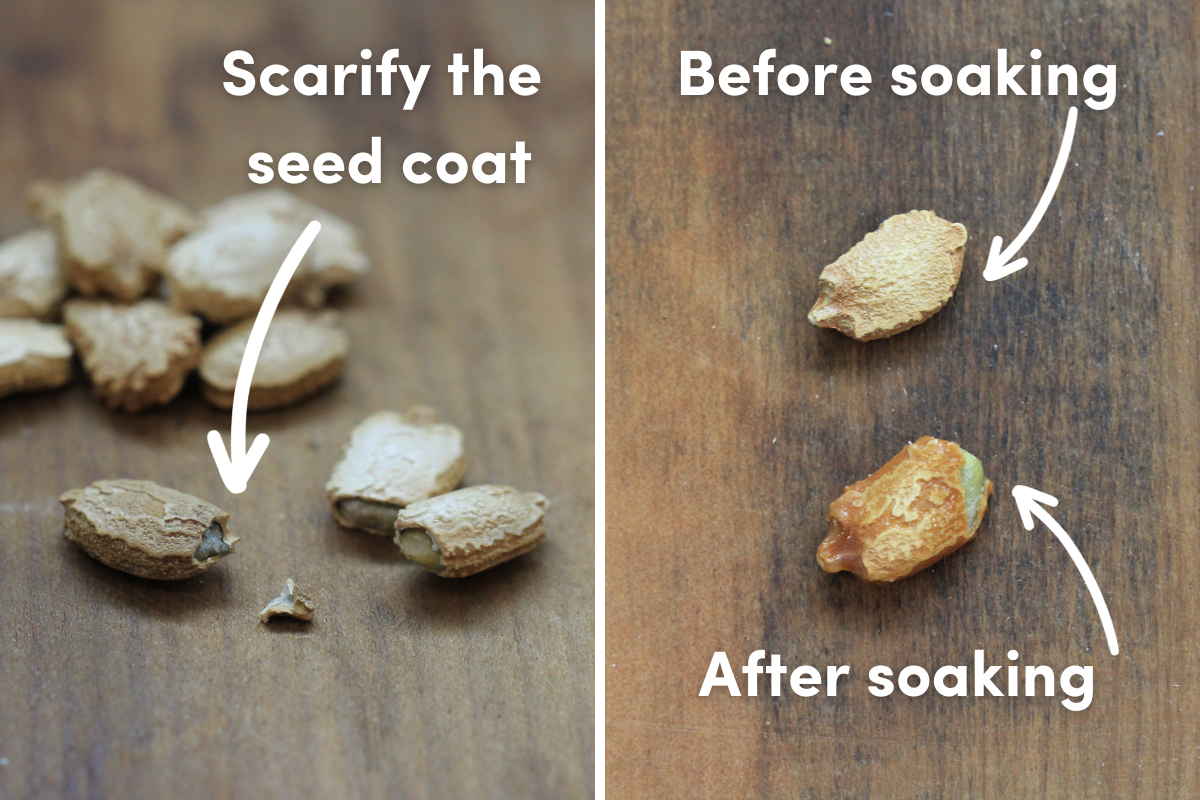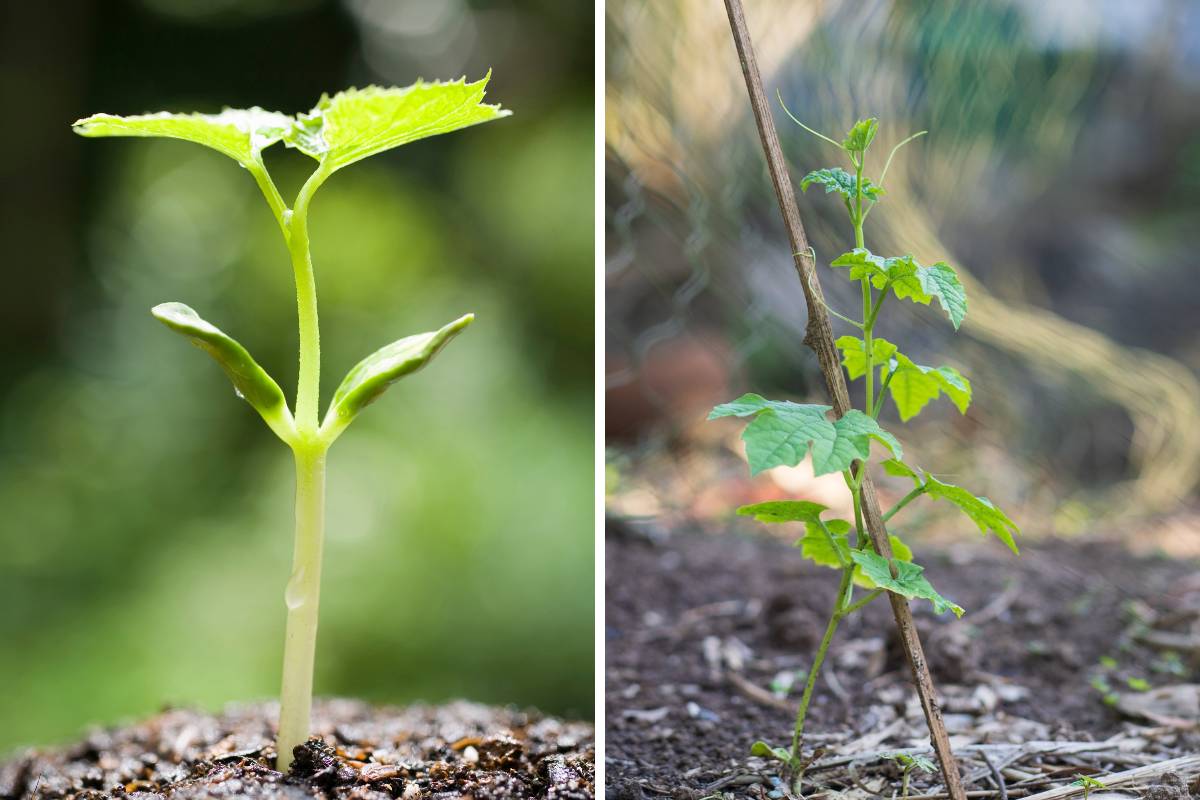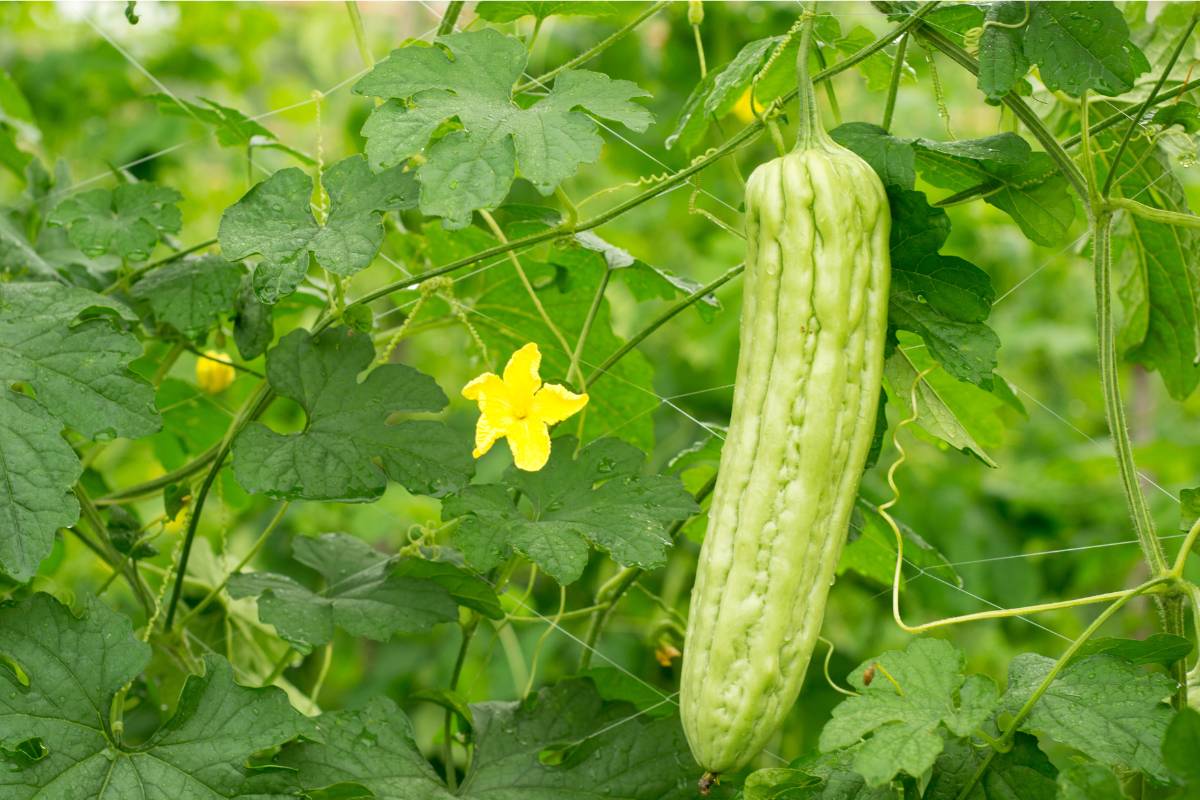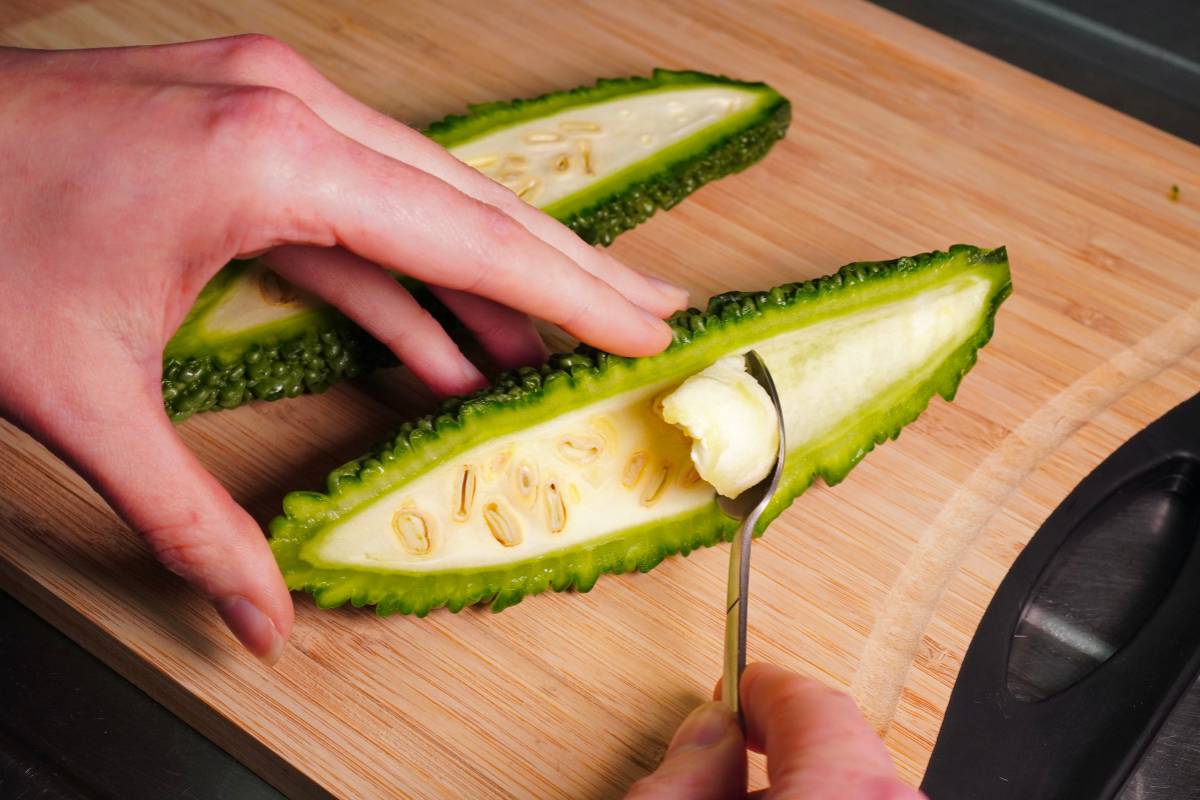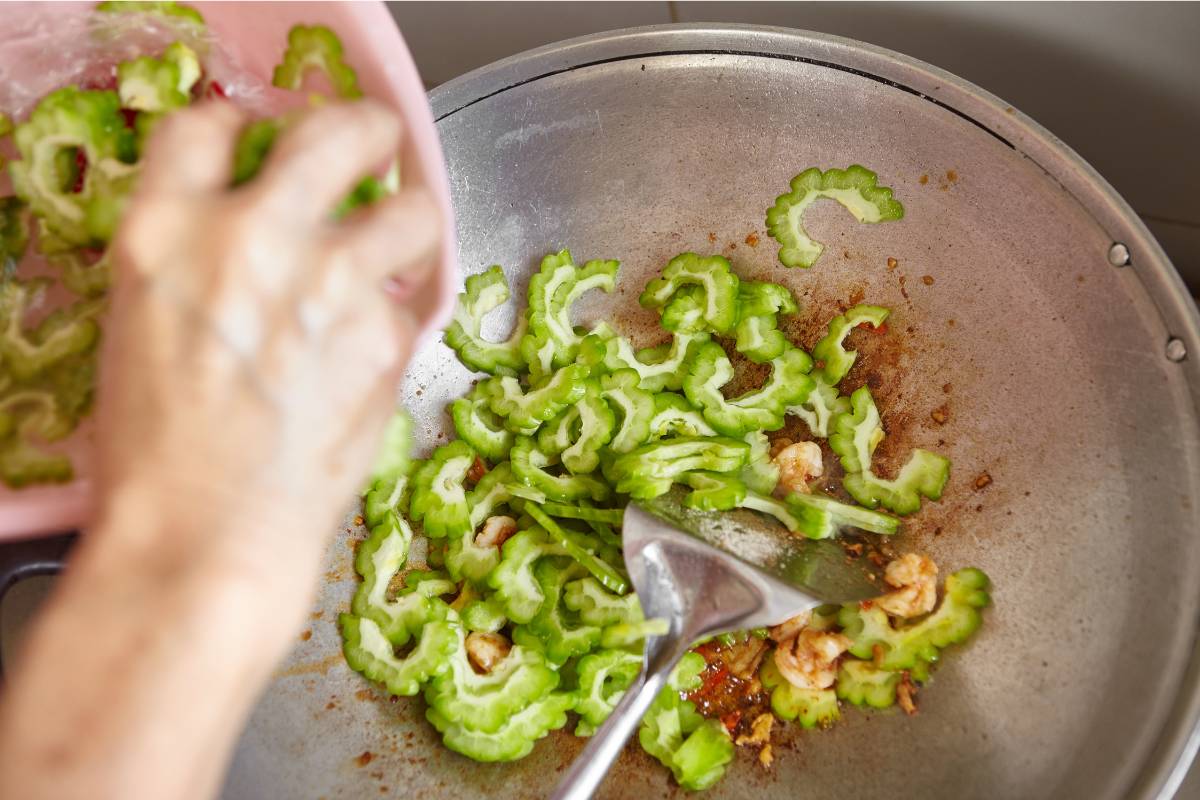Bitter melon holds a special place in many Asian and Indian cultures, where it is often used for its distinctive bitter flavour to balance and complement a variety of rich and savoury dishes. With unusual-looking seeds, textured fruit and a love-it-or-hate-it bitter taste, growing bitter melon can add a touch of the exotic to your vegetable patch.
Bitter melon is a frost-tender annual and a member of the cucurbit family, along with its more commonly grown cucumber, squash and sweet melon relatives. Known botanically as Momordica charantia, bitter melon originated in Africa but is now most widely grown in India and throughout Asia. There are two broad types available, Chinese and Indian, but both have a similar bitter flavour.
Bitter Melon in the Veggie Patch
Bitter melon grows as a climbing or sprawling vine with deeply lobed leaves, and produces multiple fruits up to 20cm long on each plant. Fruit colours can range from white through light green to dark green, with outer surfaces anywhere from smooth and shiny to ribbed, knobbly, gnarly and dramatically spiky. Despite these aesthetic differences, all varieties have a similar flesh and flavour.
Inside, the crunchy but moist flesh holds many large seeds that start off white, changing progressively from yellow to red as the fruits ripen. By the time the seeds are a deep red, the flesh's taste will often be inedibly bitter. Consequently, the fruits are usually harvested a little before full maturity.
How to Grow Bitter Melon
Germination is the most difficult part of growing bitter melon, as the seeds have a hard outer covering that needs to be broken so that water can penetrate. The most common way of doing this is to soak the seeds for 12 to 24 hours in warm water so they swell and the skin splits. To speed this up, you can use nail clippers to snip off a small amount of the seed shell before soaking, taking care to only nick the outer layer, avoiding the kernel.
After soaking, plant the seeds 15mm deep in their final location if your climate is suitable, spaced about 45cm apart. In cooler areas, sow seeds indoors; as a subtropical native, bitter melon needs consistently warm temperatures to germinate, typically taking 10-15 days at soil temperatures of 25-28°C. As with chilli and other subtropical plants, indoor sowing using a heat mat is often the best option for reliable germination.
If they're sown indoors, harden off the seedlings before transplanting them to their final location once the weather is reliably warm. The final growing spot should be in full sun with a rich soil, and watering should be generous and consistent throughout the plant's life.
To prevent the fruit from rotting in contact with the earth, the plant needs to be grown against a strong trellis or fence up to 1.8m in height. The vines might need to be tied to their support at first, but will soon begin to scramble under their own steam.
Temperatures reliably above 27°C are needed for fruiting to begin, and if conditions are right, fruit should start to appear roughly 60 days after germination. Healthy plants will produce 10 to 12 fruits each so long as the temperature stays warm and the vine has enough nutrition.
Common Pests and Diseases
Bitter melon is largely untouched by pests, which seem to be deterred by the plant's strong flavour. However, as with its cucurbit relatives, downy mildew can appear in conditions of high humidity and low airflow. To reduce the risk, ensure the plants are properly spaced and are watered at soil level with as little splashing as possible.
Fusarium wilt can also be an issue, and once it takes hold, it's usually fatal for the plant. Reduce the danger by not growing susceptible plants in the same space from year to year so that the responsible pathogen has less chance to build up.
Bitter Melon in the Kitchen
Both the leaves and fruit of bitter melon are edible, and both have a distinctive bitter taste which may take some getting used to. For milder fruit, blanch them in boiling water for a minute or two before plunging them into iced water to help preserve the colour, then cook as described below.
Both leaves and fruit are widely used in soups and stir-fries where their bitterness will offset rich or oily flavours, pairing well with pork, eggs, black bean sauce and robustly flavoured seafood such as prawns. The bitterness contrasts nicely with strong flavours but will overpower more delicate ones, so use with care.
If eating the fruit, slice it lengthwise and scoop out the seeds and white pith. Then, either stuff and bake it in a similar way to zucchini or squash, or slice it into segments for use in stews or stir-fries.
Lastly, as with many other cucurbits, bitter melon is great when made into a pickle or chutney for long-term storage. The combination of bitterness and sweetness livens up any cold plate or sandwich.
Bitter melon may not be as common or well-mannered as its cucurbit relatives, but it adds interesting variety to a veggie patch. And once you acquire a taste for its flavour, you'll wonder how you ignored it for so long.
